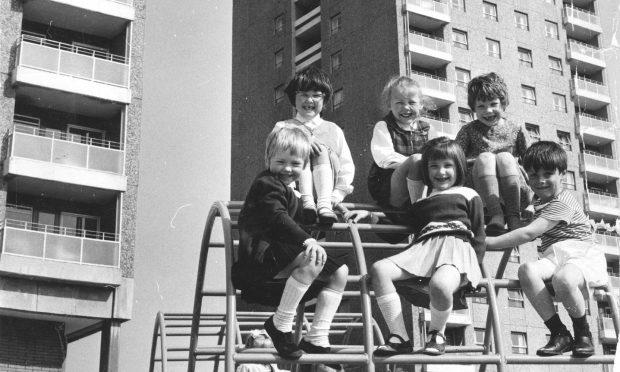Taking a stroll down Bedford Road these days, you’d never know it had been a scene of terror and tragedy during Aberdeen’s most devastating blitz in the Second World War.
While London, Coventry and dock cities in the south were famously targeted by the Nazis, Aberdeen was the most frequently bombed city between 1940 and 1943.
This sobering statistic earned Aberdeen the grim nickname ‘Siren City’ – and one night in spring 1943 will forever be remembered as the Big Blitz.
The unassuming facades of the Victorian granite tenements that line Bedford Road today give no hint of the death and destruction that took place on April 21 1943.
Join us as we take a step back in time and take a closer look at the fateful night that brought the reality of war to the doorsteps of innocent Aberdonians.
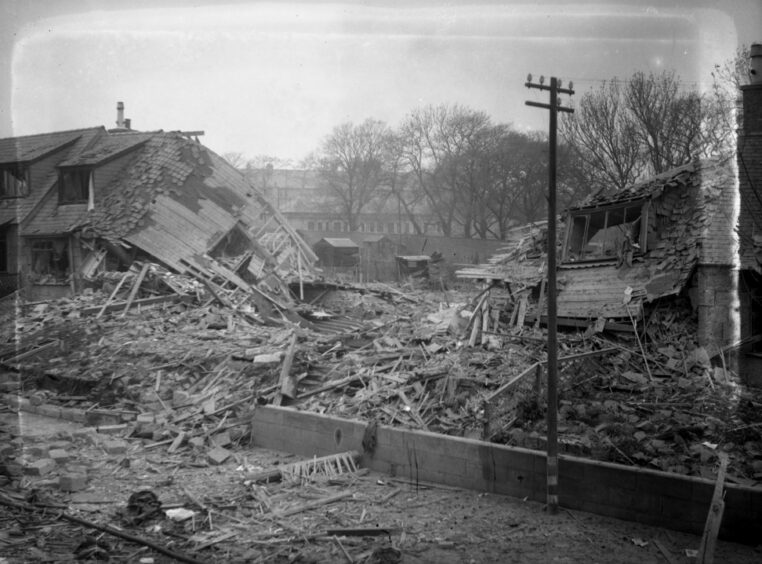
The “working class districts” of Kittybrewster and Woodside were said to be “a sea of flames” as German aircraft swooped over rooftops, indiscriminately dropping bombs and spraying bullets.
The sinister silhouettes of planes were seen flying in from the North Sea, appearing over the densely-populated area at nightfall just as many Aberdonians were settling down for the night.
The first bombs dropped on Bedford Road at 22.17pm caused extensive fires, and as daylight faded, the Aberdeen skyline was illuminated by fire.
For an hour-and-a-half, Aberdonians were subjected to sheer horror on an unimaginable scale.
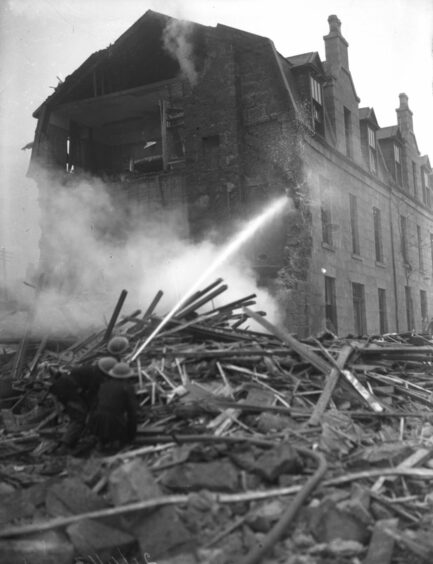
This photo above shows just one of the grave scenes which greeted emergency services, rescue workers and volunteers during the midweek raid.
The German Luftwaffe concentrated their efforts on the Kittybrewster area; many families made it to air raid shelters, but many did not.
Under this pile of granite and rubble on Bedford Road was a shelter, which rescuers desperately clamoured to reach, fearing multiple casualties below.
Whole families were initially unaccounted for after some tenements suffered direct hits, and neighbours courageously joined the search as planes still soared overheard.
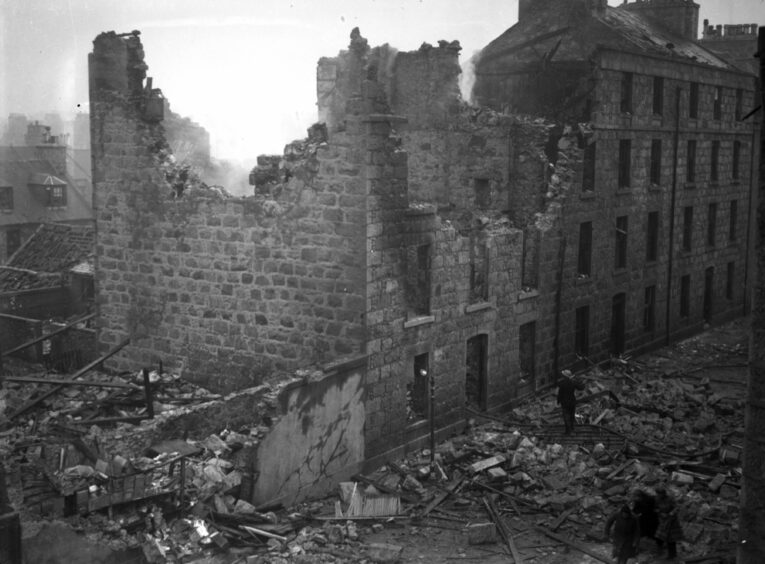
This photo above shows the remains of a Bedford Road tenement where several families lived, including the Websters.
Mr Webster, an elderly Boer War veteran, joined his neighbours in evacuating the intact tenement as the blitz siren sounded.
But realising he had no shoes on, told them: “I’ve got nothing on my feet; I’ll go back for my boots.”
It was a decision which cost him his life as the tenement took a direct hit minutes later.
At another address, a mother and her infant son perished when she went upstairs to get her child to seek safety in a shelter, just as the roof was blown off her house.
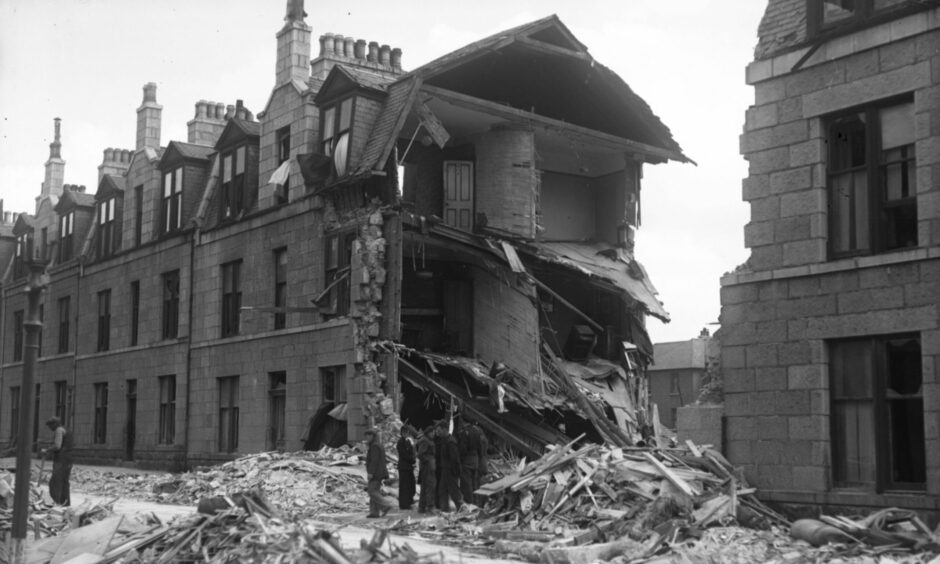
This photo above shows another tenement on Bedford Road where a bomb tore its way through the attic roof and several storeys before exploding below.
The seemingly impenetrable granite was wrenched away at the seams.
Curtains billow in the blown-out windows, and the three floors and attic were left gaping, exposing the shattered furniture inside.
Rescuers reported seeing a toy engine dangling from a sagging floor, but miraculously there were no casualties.
Taking heed of the air raid warnings, the occupants were already on their way downstairs as the bomb fell, escaping certain death.
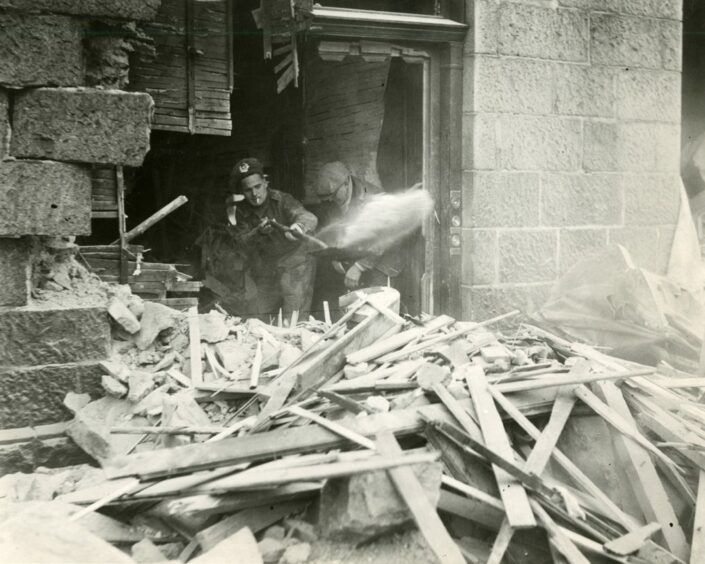
Eye-witness reports from Bedford Road that night told how three bungalows were levelled to the ground in the blitz, although the occupants were rescued.
A young man, William Reid, was carried alive from one, having been trapped under a fireplace and bath.
The wardens praised his bravery and said “they don’t make them gamer”.
But elsewhere, two 500kg bombs directly hit a shelter where 12 railway workers and a civilian had taken refuge at Kittybrewster Station.
Trapped for three hours, nine were rescued alive but injured, and sadly three railwaymen and the civilian were killed.
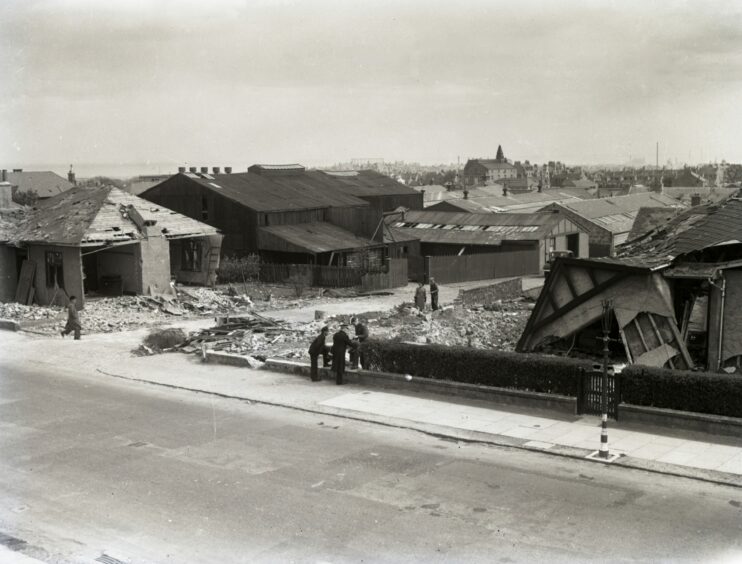
Despite the devastation, there were tales of heroism, stoicism and miraculous escapes.
One Bedford Road resident, Albert Adams, told how he dashed through machine gun fire with his two young children to reach safety.
He said: “The bullets were flying furiously. I crawled into the ash house on my way to the shelter for protection, but when I looked up there was no roof. It was no place for us, and we made a dash to the shelter and safety.”
A dozen children in a nearby night nursery escaped with minor cuts, but the building next door was flattened.
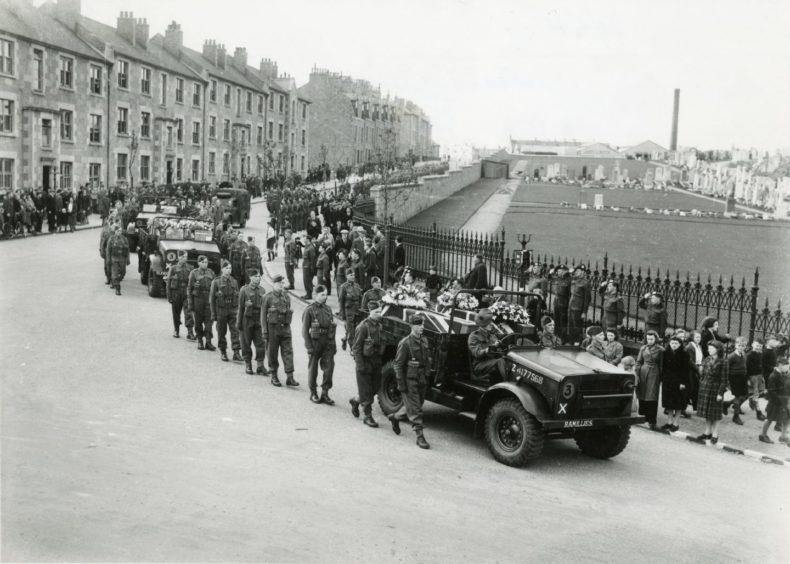
This sombre photo shows the cortege of army vehicles taking blitz victims from Bedford Road and Cattofield down Seaforth Road to the Trinity Cemetery on May 2 1943.
Aberdonians lined the streets in silent tribute to the 98 civilian war dead, many of whom perished in their own homes in one of the darkest nights in the city’s history.
Interactive map shows details of every bomb that hit Aberdeen in World War II

